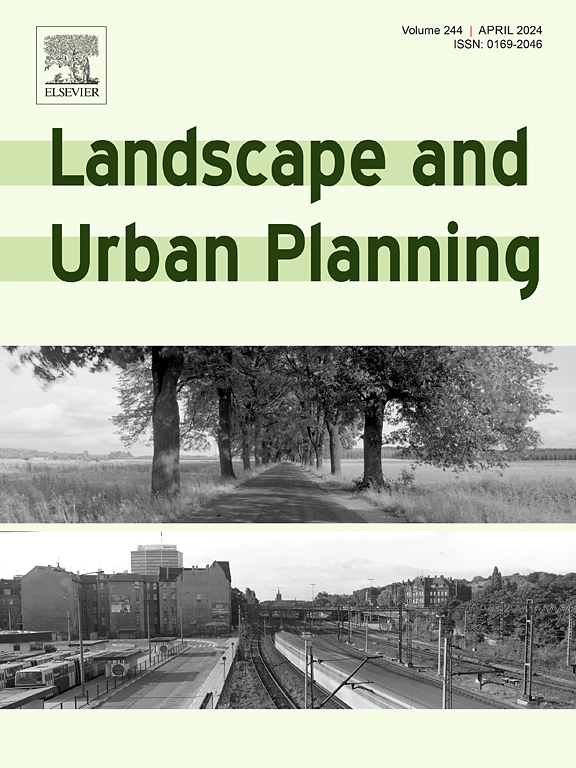Optimizing green space-building landscape characteristics of key urban functional zones for comprehensive thermal environment mitigation
IF 7.9
1区 环境科学与生态学
Q1 ECOLOGY
引用次数: 0
Abstract
The Urban Heat Island (UHI) effect has garnered significant attention due to its detrimental effects, such as increased near-surface temperatures, reduced resident comfort, heat-related illnesses, and damage to urban ecosystems. While strategies including expanding green spaces, optimizing building layouts, adjusting vegetation, and using high-albedo materials are known to mitigate urban thermal conditions, a targeted, comprehensive approach to urban thermal management remains elusive. Our study addresses this gap by introducing a socio-economically driven method to segment the urban landscape into Urban Functional Zones, identifying and prioritizing zones with the most substantial thermal impact for enhancement. We stratify target zones into those requiring no adjustment, temporary non-adjustment, and those needing adjustment, based on the statistical distribution of land surface temperatures. We then employ landscape indices that encapsulate the spatial arrangement of green spaces and built environments, pinpointing specific structural elements within these zones for targeted thermal improvement. Adjustments are made to the building-green space landscape, focusing on high-temperature areas with the aim of aligning temperatures with low-temperature regions, guided by the identified structural elements indicated by landscape indices. Our research presents a clear, actionable framework for urban managers to improve thermal conditions, applicable to various cities requiring such interventions.
优化城市重点功能区绿地建设景观特征,促进热环境综合治理
城市热岛效应(UHI)由于其不利影响,如近地表温度升高、居民舒适度降低、与热有关的疾病和对城市生态系统的破坏,引起了人们的广泛关注。虽然扩大绿地、优化建筑布局、调整植被和使用高反照率材料等策略可以缓解城市热状况,但有针对性的综合城市热管理方法仍然难以实现。我们的研究通过引入一种社会经济驱动的方法来解决这一差距,将城市景观划分为城市功能区,确定并优先考虑具有最大热影响的区域进行增强。根据地表温度的统计分布,我们将目标区分为不需要调整、暂时不需要调整和需要调整。然后,我们使用景观指数来封装绿色空间和建筑环境的空间安排,在这些区域内精确定位特定的结构元素,以进行有针对性的热改善。对建筑绿地景观进行调整,重点关注高温区域,目的是在景观指数指示的已识别结构元素的指导下,使温度与低温区域保持一致。我们的研究为城市管理者提供了一个清晰、可操作的框架,以改善热条件,适用于需要此类干预措施的各种城市。
本文章由计算机程序翻译,如有差异,请以英文原文为准。
求助全文
约1分钟内获得全文
求助全文
来源期刊

Landscape and Urban Planning
环境科学-生态学
CiteScore
15.20
自引率
6.60%
发文量
232
审稿时长
6 months
期刊介绍:
Landscape and Urban Planning is an international journal that aims to enhance our understanding of landscapes and promote sustainable solutions for landscape change. The journal focuses on landscapes as complex social-ecological systems that encompass various spatial and temporal dimensions. These landscapes possess aesthetic, natural, and cultural qualities that are valued by individuals in different ways, leading to actions that alter the landscape. With increasing urbanization and the need for ecological and cultural sensitivity at various scales, a multidisciplinary approach is necessary to comprehend and align social and ecological values for landscape sustainability. The journal believes that combining landscape science with planning and design can yield positive outcomes for both people and nature.
 求助内容:
求助内容: 应助结果提醒方式:
应助结果提醒方式:


